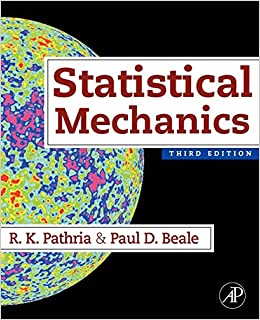The quantum states available to a given physical system are (i) a group of (g_{1}) equally likely
Question:
The quantum states available to a given physical system are (i) a group of \(g_{1}\) equally likely states, with a common energy \(\varepsilon_{1}\) and (ii) a group of \(g_{2}\) equally likely states, with a common energy \(\varepsilon_{2}>\varepsilon_{1}\). Show that this entropy of the system is given by
\[
S=-k\left[p_{1} \ln \left(p_{1} / g_{1}ight)+p_{2} \ln \left(p_{2} / g_{2}ight)ight]
\]
where \(p_{1}\) and \(p_{2}\) are, respectively, the probabilities of the system being in a state belonging to group 1 or to group 2: \(p_{1}+p_{2}=1\).
(a) Assuming that the \(p_{i}\) are given by a canonical distribution, show that
\[
S=k\left[\ln g_{1}+\ln \left\{1+\left(g_{2} / g_{1}ight) e^{-x}ight\}+\frac{x}{1+\left(g_{1} / g_{2}ight) e^{x}}ight]
\]
where \(x=\left(\varepsilon_{2}-\varepsilon_{1}ight) / k T\), assumed positive. Compare the special case \(g_{1}=g_{2}=1\) with that of the Fermi oscillator of the preceding problem.
(b) Verify the foregoing expression for \(S\) by deriving it from the partition function of the system.
(c) Check that at \(T ightarrow 0, S ightarrow k \ln g_{1}\). Interpret this result physically.
Step by Step Answer:






